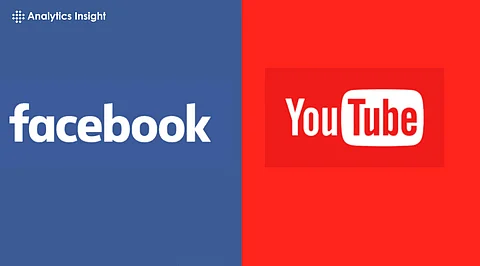

YouTube Shorts pay creators only US$0.07 per thousand views while Facebook Reels generate US$35,000 monthly bonuses
Secret algorithm differences explain why identical content fails on one platform but goes viral on another
Platform choice mistake costs creators average US$50,000 annually in lost revenue opportunities they never knew existed
Content creators face one crucial decision today. Choosing the right platform determines whether they build lasting income or struggle for visibility. YouTube and Facebook dominate video sharing, yet they reward creators differently. Smart creators understand these differences before investing their time.
This comparison reveals which platform suits different creator goals. We examine audience behavior, earning potential, and growth strategies. Both platforms offer unique advantages that savvy creators can leverage effectively.
Different audiences prefer different platforms for video consumption. Understanding viewer demographics helps creators target their content effectively. Age groups behave distinctly across these platforms.
Most YouTube users are between 25-34 years old, with 253 million people using it in the US. Facebook users are also mostly 25-34, but the platform stays popular with older adults too. Younger people aged 18-24 only spend 22 minutes daily on Facebook, preferring TikTok instead.
The YouTube users spend 48.7 minutes per day watching content, while Facebook users average 30.9 minutes daily. YouTube audiences come specifically to watch videos. Facebook users might discover your content while doing other things.
Monetization requirements vary significantly between platforms. Each platform has different barriers to entry and payment structures. Understanding these differences helps creators plan their strategy.
Making money on YouTube requires meeting specific rules. Content creators need 1,000 subscribers and either 4,000 watch hours per year or 10 million Short views in 90 days. The platform pays creators 55% of ad money, with most earning US$3-US$5 for every 1,000 views.
Facebook has easier rules for content creators. You need 10,000 followers and 600,000 minutes of watch time over 60 days. Facebook typically pays US$2-US$5 per 1,000 views, though some creators report earning US$8.75-US$10 per 1,000 views. Facebook now pays creators for Reels, long videos, photos, and text posts through one program.
Facebook allows faster monetization for new creators. Google's platform offers higher long term earning potential for successful channels.
Also Read: Top 10 Richest YouTubers in the World
Platform algorithms determine who sees your content. These systems work completely differently and favor different content types. Content creators must adapt their approach to each platform's discovery method.
YouTube focuses on keeping viewers happy by showing them videos they want to watch based on their history. The system looks at what people watched before, what they searched for, and how much of each video they finished.
Facebook changed how it works, now showing up to 50% of content from pages people don't follow. This means new creators with 500 followers can go viral just as easily as those with 5 million followers. Facebook likes content that gets people talking and sharing with friends.
YouTube rewards educational content and tutorials that people actively search for. Facebook favors entertaining and inspiring content that sparks conversations.
Short form content dominates both platforms now. Each platform treats short videos differently in terms of monetization and reach. Content length strategy affects earning potential significantly.
Shorts on YouTube get 70-90 billion views daily with good engagement rates. These short videos pay much less, only US$0.03-US$0.07 per 1,000 views.
Facebook Reels get 200 billion daily views, with top creators earning up to US$35,000 monthly through bonus programs. Facebook prefers videos under 90 seconds that teach or inspire people rather than sell products.
YouTube creators use Shorts to attract viewers to longer monetized videos. Facebook creators focus on viral Reels for rapid follower growth.
Geographic distribution affects earning potential across platforms. Different regions generate varying advertising revenue for creators. Market penetration differs between the platforms globally.
India has the most YouTube users with 491 million people, followed by the US with 253 million. Facebook remains the world's biggest social platform, with 98.5% of users accessing it on phones. In the US, Youtube is actually more popular than Facebook now.
Content creators who attract viewers from higher paying countries earn more per view. Geographic audience targeting becomes crucial for maximizing revenue.
Platform choice depends on creator goals and content style. Each platform suits different strategies and audience types. Most successful creators eventually use both platforms strategically.
The Facebook vs YouTube debate often misses this point. Youtube works better for creators who want to build long term businesses around their content. The higher pay rates and search based discovery mean successful creators often earn more money over time.
Facebook suits creators who want to grow quickly and reach new audiences without having many followers first. The viral potential on Facebook is real, and the lower requirements mean you can start earning money sooner.
Educational content and tutorials typically perform better on YouTube. Entertainment, news, and inspirational content often does well on Facebook.
Platform loyalty seems to be declining amongst the successful content creators, top performers spend time distributing their content on more than one channel rather than sticking to one.
Creator earnings show interesting patterns when comparing YouTube vs Facebook approaches. YouTube pays for consistency, expertise building, whilst Facebook pays for the viral moment and all social engagement.
The future will belong to creators who will learn so much about cross platform protocols. Smart content creators treat platforms as complementary tools rather than competing choices.
Also Read: Top YouTube Channels to Learn Data Engineering from Scratch
